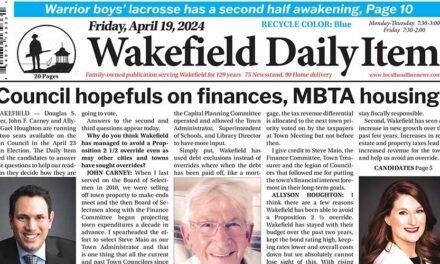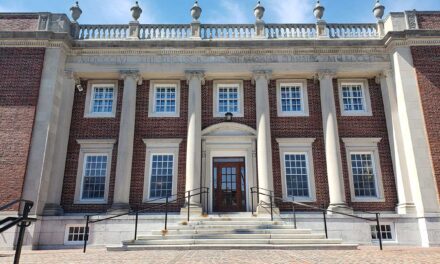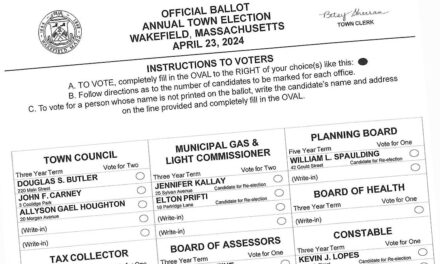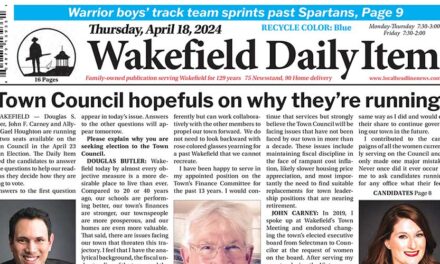Published in the January 7, 2016 edition.
WAKEFIELD — The local Rail Trail Committee needs to know what you think.
A public forum regarding a proposed Rail Trail to cut through Reedy Meadow will be sponsored by WorldTech Engineering on Wednesday, Jan. 13, at
7 p.m. in the cafeteria of the Galvin Middle School on Main Street.
Last month, WorldTech presented an update on the project to the selectmen. At that time they brought up that, as part of the process prior to presenting information to MassDOT (Department of Transportation), this public forum is held for the town residents to be updated on the project and give their input on any concerns they may have.
There had been a similar forum held in both Lynnfield and Wakefield back in April of 2014 for initial input from each community.
These public forums are an essential piece of the process. It is very important for them to both gauge the support of citizens and to hear what concerns they may have. Please note that date and time on your calendar and avail yourself of this opportunity to share your input with town officials, the Wakefield Rail Trail Committee and the consultants who have been hired by the town to have this project become a reality. So whether you are a supporter of the project or have issues with it, please come and let them know how you feel.
The proposed Wakefield–Lynnfield Rail Trail project is moving forward and a 25 percent design submission will be submitted to the state this summer, according to the consulting team that is working on the project.
Richard Benevento and Bill Mertz of WorldTech Engineering and Randy Collins of Beta Engineering met with the selectmen last month to provide the board with a status update on the project.
The Rail Trail project as proposed would provide a 4.4-mile recreational trail along an abandoned rail bed beginning at the Galvin Middle School on Main Street in Wakefield and extending through Lynnfield to the Peabody line. Approximately 1.9 miles of the trail is located within Wakefield and about 2.5 miles is located in Lynnfield. The planned trail would run through Reedy Meadow for just over a half mile.
The Massachusetts Department of Transportation (MassDOT) will fully fund the construction of the project through the State Transportation Improvement Program (STIP). The project is on the list to be funded in FY 2018 at $7.6 million. The 25 percent design submission due this summer is one of the steps required by the MassDOT program.
Benevento reviewed the history of the project for the Wakefield selectmen dating back to 2004 when the Wakefield Rail Trail Committee was formed. In 2006, the state allocated $30,000 to complete a feasibility study for the Wakefield–Lynnfield Rail Trail.
In 2008, Benevento noted, state Senator Richard Tisei along with Rep. Katherine Clark and Rep. Mark Falzone secured $500,000 in a Transportation Bond Bill for the preliminary design and engineering of the trail. Those funds were released in 2010, Benevento said, and those are the funds that WorldTech is using for their current engineering work.
In September 2010, Benevento said, the town of Wakefield issued RFPs and received proposals from MassDOT pre-qualified Engineering firms. In December 2012, MassDOT notified Wakefield that the project was eligible for federal highway funds. Subsequently, in December 2013, the town of Wakefield, as the lead agency for the project, entered into an agreement with WorldTech Engineering.
In April 2014, Benevento noted, the preliminary design phase began with public information meetings held in Wakefield and Lynnfield. Those meetings were well-attended in both towns, Benevento said.
Mertz talked about some of the up front, investigative work that the engineers have done in preparation for the preliminary design phase. He said that engineers have established the exact route and the horizontal and vertical alignment of the trail. They have also laid out the places where the trail will cross streets, Mertz said.
Mertz told the selectmen that engineers have done an assessment of environmental impacts of wetlands within the flood plain. They have also completed geotechnical investigations and analysis to make sure that the soils in Reedy Meadow would be able to support whatever structure is used to cross that resource area.
The original plan, Mertz said, was to use a series of flatbed rail cars mounted on the existing rails to span the 6/10ths of a mile portion of the trail that goes through Reedy Meadow. It was initially seen as an environmentally conscious solution for crossing Reedy Meadow by re-using existing rails and other materials, Mertz said.
But that idea was discarded, Mertz explained, after analysis determined that such an approach would displace enough water to raise the floodway water surface level by three inches. Any such rise in the water level is viewed as a fatal flaw by regulators, he said. In addition, he noted, there were concerns about the rail cars settling in the soil over time.
Mertz added that the rail car approach also presented major logistical issues. There was no guarantee that the necessary 70 cars would even be available for purchase and they would then have to be delivered over local streets, he said. The cost was also a factor. At $15,000 per car, the total would come to about $1 million for 70 cars.
As an alternative to the rail cars, engineers are now proposing a boardwalk structure that is estimated to cost $700,000 to build.
Mertz said that more neighborhood meetings in Wakefield and Lynnfield are planned in January 2016 and asked Randy Collins of Beta Group to review the presentations that will be shown at those meetings.
Collins described the trail as a “linear park.” He talked about how the trail would be screened from abutters. He showed the selectmen slides of trail cross sections, at-grade street crossings and landscaping. Collins also talked about amenities along the trail like bike racks, benches, planters and trash receptacles.
Benevento introduced Wakefield rail trail advocate Dot Halpin and Lynnfield Recreational Path Committee Chairman Janet Long.
Long said that her committee has talked to all of the abutters along the proposed trail route and found that most people were supportive of the trail. But she did admit that there was some very vocal opposition.
In response to another question, the engineers talked about how parking will be addressed at various access points along the trail.
“What we don’t want,” Benevento said, “is areas where people are going to park on neighborhood streets. We want to make sure that there are designated parking areas.”
The next steps are the neighborhood meetings in January, the 25 percent design submission next summer, followed by a design public hearing (pending MassDOT review).
From that point, it was explained that the steps are determined by the MassDOT process. Assuming the 25 percent design is approved, the engineering team expressed hope that the project would continue through the construction process toward full completion.




